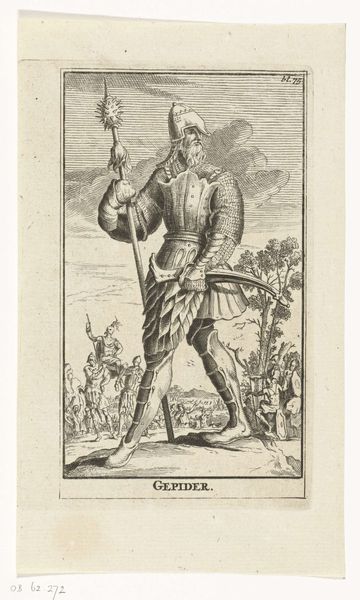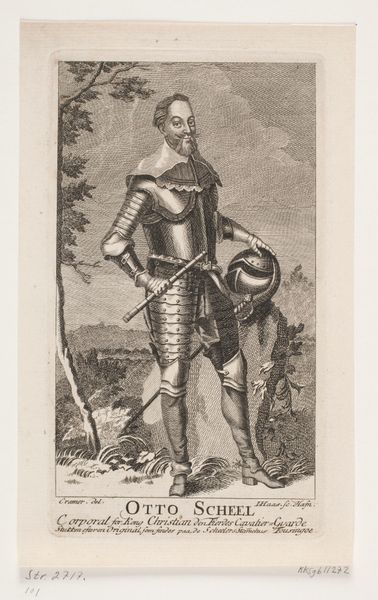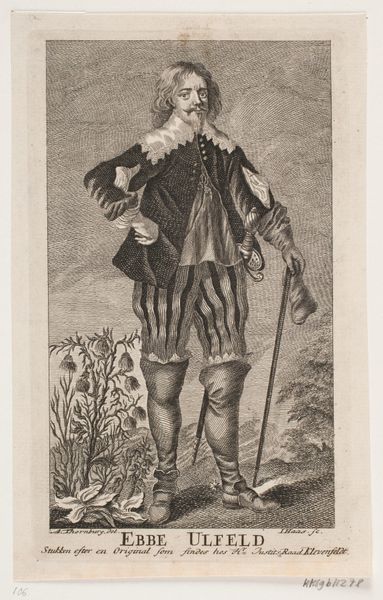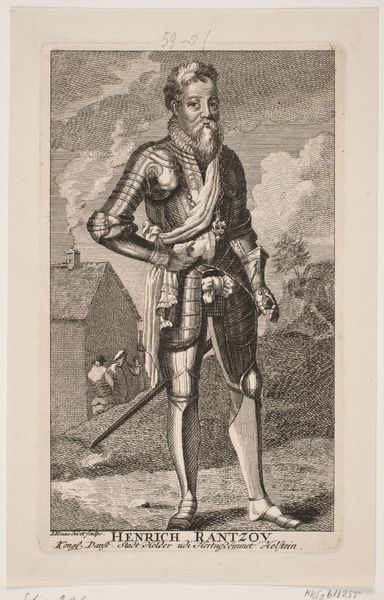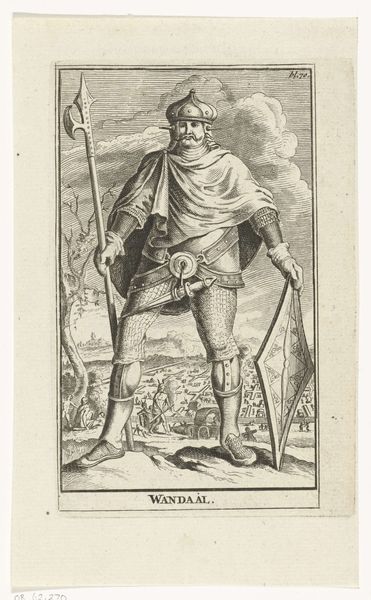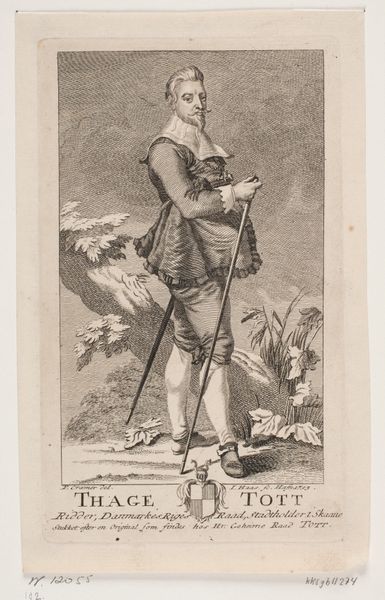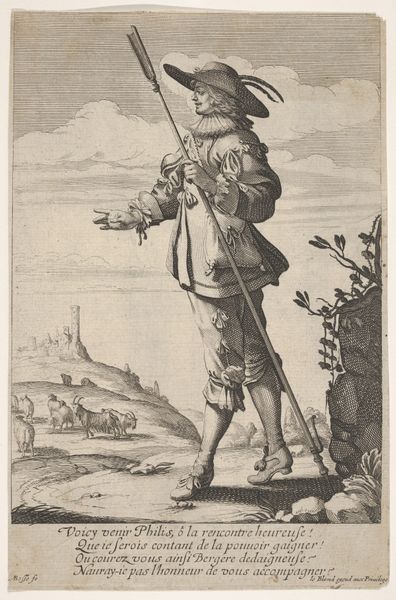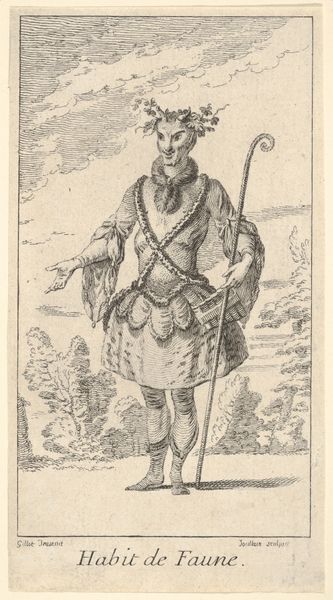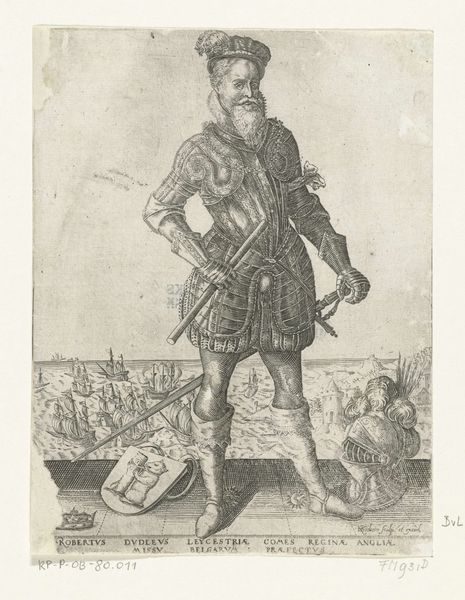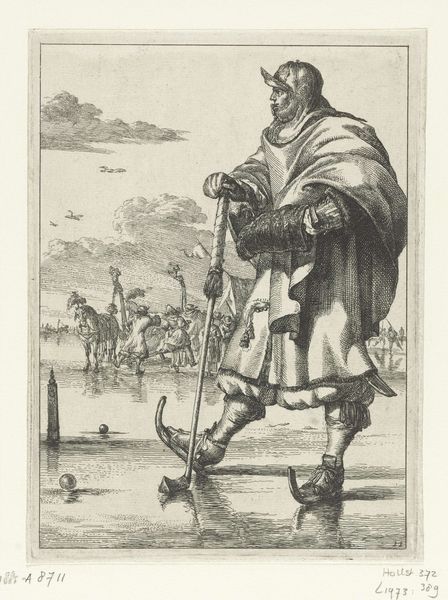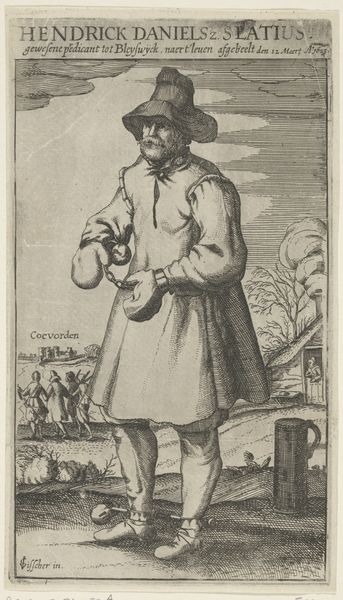
print, engraving
#
portrait
#
baroque
# print
#
old engraving style
#
figuration
#
history-painting
#
engraving
Dimensions: 178 mm (height) x 108 mm (width) (plademaal)
Editor: Here we have Jonas Haas’ engraving, "Jørgen Skeel til Estrup," created between 1753 and 1754. It strikes me as quite formal; the subject's armor seems to define his identity more than his face. What kind of statement do you think it’s trying to make? Curator: It's less about individual identity, and more about projecting a public image of power and lineage. Consider the historical context. While produced in the mid-18th century, it harkens back to a Baroque aesthetic of the 17th. Aristocratic power was visually reinforced through portraiture – think of this less as a 'likeness' and more as propaganda. Do you see how the engraving medium itself also plays a role? Editor: Yes, the lines are so precise. It must have been incredibly time-consuming to create all that detail, especially on the armor! Is that contributing to the image of power, this idea of expense? Curator: Precisely. The act of commissioning an engraving like this, which would be distributed and seen, signaled wealth and influence. But look closer at the placement within a museum context. What does it mean to place what was originally propaganda into our institutions today? Does it act as a time capsule, transporting and framing this character? Editor: So, we're not just looking at a portrait of a nobleman, but also at how the artistic practices and social structures of the time helped maintain class hierarchies? I hadn't really thought about the politics inherent in portraiture from this period before. Curator: Exactly. These images weren't passive reflections; they actively participated in the social and political landscape. And how we view and contextualize them within museums changes over time as well. Editor: I see that now! The context surrounding the art— who made it, who consumed it, and even where it's displayed—it shapes the piece itself. Curator: Glad you agree, now apply that lens to every work you encounter.
Comments
No comments
Be the first to comment and join the conversation on the ultimate creative platform.
